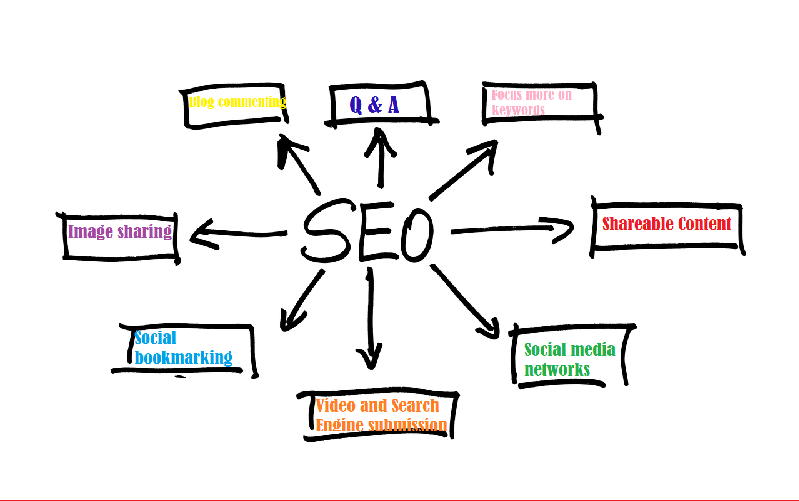“Monkey Holding Box”, Have you typed this in Google search engine? If you had done this a few days back, you would have been surprised by the result.
In today’s digital world, Google has become like a super-smart friend that everyone turns to for finding answers and information accurately and fast. But even super-smart friends can make mistakes sometimes. Lately, something kind of error has happened.
When people searched for Monkey Holding Box, instead of getting a picture of a monkey with a box, they got a picture of a young Black boy holding a cardboard box.
So, what does this unfortunate mix-up mean? It is a reminder that even though Google is like anybody’s super-smart friend, it’s not perfect.
It is still learning, just like any other person. If you are not aware of the whole incident, don’t worry! Here’s a detailed explanation of the incident.
Contents
The Power of Google Search
In today’s digital era, the dominance of Google’s search engine is an undeniable force. It directly influences how people gather information, and it covers almost everything in the world.
Google has evolved into a powerful tool and a trusty guide that is always ready to assist people at every digital crossroads. At the heart of this lies Google’s formidable database and its sophisticated algorithms.
With vast knowledge and modern computational powers, Google promises accurate and relevant responses to search inquiries. The volume and versatility of Google’s search functionality help users to get information of all kinds.
From normal search to in-depth research, Google provides information that defines the digital age. The ability to ask any question and get a relevant answer has made Google from a mere search engine to an indispensable tool of modern times.
Google plays an important role in every people’s life, showing how technology matters the most. And it is not just about finding answers, as it is also about how people see and connect with the world.
It is kind of like having a huge encyclopedia at your disposal, which has almost everything and helps to learn and discover new things every day.
“Monkey Holding Box” Incident
In Google’s search algorithms, an error has emerged, and it is called a “Monkey Holding Box” incident.
This error is from a video in the top spot on Google’s first search page, triggered by specific keywords related to both monkeys and boxes.
This unexpected twist has created debates and discussions around the world about whether it is an honest mistake or a clever manipulation of Search Engine Optimization (SEO) tactics. This error has got the attention of tech people and others globally.
At its heart, this error seems to have come from an error in the Google crawler. This digital explorer, responsible for combining through the internet’s information, made an unexpected error. It landed an unrelated video in an unusual position.
What’s even more notable is the content of this video which has a mix of adorable monkey antics and content that some critics find objectionable. This issue has raised questions about Google’s commitment to openness and responsibility in curating search outcomes.
The incident is a reminder that even with modern technologies, errors can happen. But what’s more significant is the debate it has sparked. Is this a mere accident or a calculated attempt to twist the system?
This question opens a window of how search algorithms function, and it also highlights the challenges of maintaining transparency in an age where digital content spreads like wildfire.
As the dust settles on the monkey holding a box affair, it makes people think not only about search algorithms but also about the technology’s impact on the modern information landscape.
Impact of Incidental Consequences
For digital exploration, search engines like Google operate as modern-day wonders. They use complex algorithms to understand user queries and provide correct results.
These algorithms take multiple factors into consideration, from specific keywords and user preferences to the credibility of websites.
However, perfection is challenging even with the technology using modern methods. Any algorithmic biases can lead to unintended consequences that can affect search outcomes and increase the already present societal biases.
The case of the monkey holding a box search result shows this problem in algorithms and unintended consequences. It is important to note that instances like this are mostly unintentional.
Google’s algorithms are designed with the intention of connecting users with relevant content. However, an unfortunate link emerged between the terms monkey and black youngster, which has given unexpected outcomes. The incident shows how even a slight error can become a surprising outcome.
The incident becomes a reminder of the fine balance algorithms must take to understand language nuances and avoid any biases. As technology is rapidly evolving, it still does not fully understand the complex interplay of language and societal context.
The monkey holding box incident highlights the importance of tuning algorithms to minimize such unintended outcomes.Beyond technology, this incident has created broader discussions about societal perceptions and stereotypes.
Search engine results can accidentally show the existing biases present in society. In a digital landscape with a lot of information, the incident creates important conversations about how technology and human perspectives come together.
Impact on Individuals and Communities
Even though incidents like this are mostly unintentional, they have a great influence on both individuals and communities.
The consequence of search results wrongly linking a young black person with unrelated queries extends far beyond the digital world, affecting the social fabric with lasting effects.
The core matter shows the deeply ingrained racial stereotypes that dehumanize already marginalized groups.
In a society where systemic biases reach into various aspects of daily life, these incidents act as reminders of continued efforts needed to cultivate inclusivity and equality.
The consequences vary widely by shaping perceptions and prejudices and further causing societal divisions.
These incidents show the negative side of digital information, highlighting how easily it can be manipulated, even when the intention is good.
The impact on individuals will vary, and it is multifaceted. For the young black person who finds this potentially derogatory content, the emotional disturbance can be very high. The feelings of frustration and helplessness are also real.
It promotes the vulnerability that comes from being misrepresented in the technological world.
Beyond the individual person, the collective psyche of marginalized communities will also suffer from this problem.
This will reduce trust in digital platforms and increase skepticism about equal treatment on online platforms. These incidents are not separated events, but they are the broader narrative of society.
This increases the urgent need to improve the digital landscape and the algorithms and ensure they are tuned to the principles of fairness and respect for diversity. This also extends to institutions, technology companies, and policymakers.
They must come together and collaborate to overcome and mitigate such biases in the digital world. Only through acknowledging the seriousness of these incidents it will be easy to create a just and equitable society for all.
Google’s Response on “Monkey Holding Box”
Google has an important role in solving algorithmic biases and upholding equity in its search results. Google’s measures to identify and rectify such incidents are very important by acknowledging the chances of errors that may arise.
The company’s commitment to issues such as monkey holding a box goes beyond corporate responsibility and forms a fundamental obligation to society.Google should recognize the connection between societal values and technology and provide multifaceted strategies to overcome these issues.
Open and transparent dialogue with its user base is important for creating an environment where concerns can be debated, discussed, and addressed. By getting feedback, Google not only comes to know about imperfection but also shows a genuine interest to evolve and improve.
Google should recognize the value of making partnerships with organizations dedicated to racial justice. Collaborative efforts with such organizations will provide valuable insights and will show a collective effort to overcome systemic biases in technology.
These alliances work for a meaningful change, bridging the gap between tech innovation and societal inclusivity. By having a diverse team, Google can improves its perspectives and enhances its ability to address potential biases in its algorithms.
Such an approach ensures that the development and maintenance of technology are guided by various viewpoints and minimizes the chances of bias.
Need for Ethical Algorithmic Development
The incident involving monkey holding box images shows an urgent need that goes beyond the digital world. This event reminds us that technology when left unchecked, can create biases that are harmful. It shows the responsibility that technology companies have in shaping the views of society.
Including ethical considerations in algorithm design is not only a necessity but it is a moral obligation. The core of this problem lies in recognizing that the algorithms are not value-neutral tools and are just human creations.
It is influenced by beliefs, prejudices, and perspectives that are with its creators. Therefore, including diversity and inclusivity in every part of algorithm development is very important. A multidisciplinary approach that includes various viewpoints ensuring that biases do not embed in the code is necessary.
The responsibility lies not only in rectifying biases that come out but also in avoiding such things from happening. Technology companies must have good ethos within their development process and address any errors before they come out.
This approach needs a continuous check, technological audits, and using diverse testing methodologies to find the biases. For ethical algorithm development, a technology company must go beyond internal mechanisms and look for external collaboration.
The collective effort of the company and advocacy groups can help regulate algorithms from various angles that align technological innovation with societal progress.Including ethical considerations in algorithm development can show a path toward equitable technology that serves humanity.
The ultimate goal, apart from the absence of any biases, is to make the data in algorithms that are fair and inclusive. This needs continuous commitment to education and awareness among developers, ensuring that they have the tools to understand more about their creations.
The root cause of algorithmic biases
Understanding the issue of algorithmic biases as caused by monkey holding box images issues needs a deep look into their root causes. Only by addressing these fundamental principles behind the algorithm an effective solutions can be made.
The training data is an important factor as it is the base of algorithm development. The evolution of the algorithm is shaped by the data it gets during its initial stages. If this data is biased or lacks any diversity, then the algorithms will inherit these problems.
This harsh reality shows the importance of using training data that is inclusive and reflects various perspectives and identities present in society.However, there are other issues in algorithmic biases apart from the data.
Another important factor is the composition of the teams responsible for algorithm development. Diversity, or any lack of diversity, within these teams directly influences the algorithms they develop.
The absence of members from marginalized communities and underrepresented groups can create a potential bias. When there are homogeneous perspectives, the capacity for nuances, cultural diversity, and potential problems in the algorithm’s decision-making process is reduced.
Addressing this gap requires efficient efforts to understand the sensitivity and a critical understanding of the potential biases that are inbuilt into algorithmic systems.
Beyond refining training data, technology companies must also prioritize diversity within their development teams. Valuing a variety of perspectives facilitates a more holistic assessment of the algorithm’s ethical and social implications.
Final thoughts
The Monkey Holding Box incident highlights the challenges within Google’s search engine algorithms. Even though the incident is unintentional, such problems show the potential presence of algorithmic biases against marginalized communities.
It is necessary for both users and society as a whole to ensure that tech giants like Google take responsibility for rectifying these biases. They should focus on promoting inclusivity and work towards more impartial search outcomes.
A situation like this is a reminder that even a multinational company with the most cutting-edge technologies cannot be free from error. So, emphasizing unbiased algorithms is essential, and it is an ongoing and evolving process.












